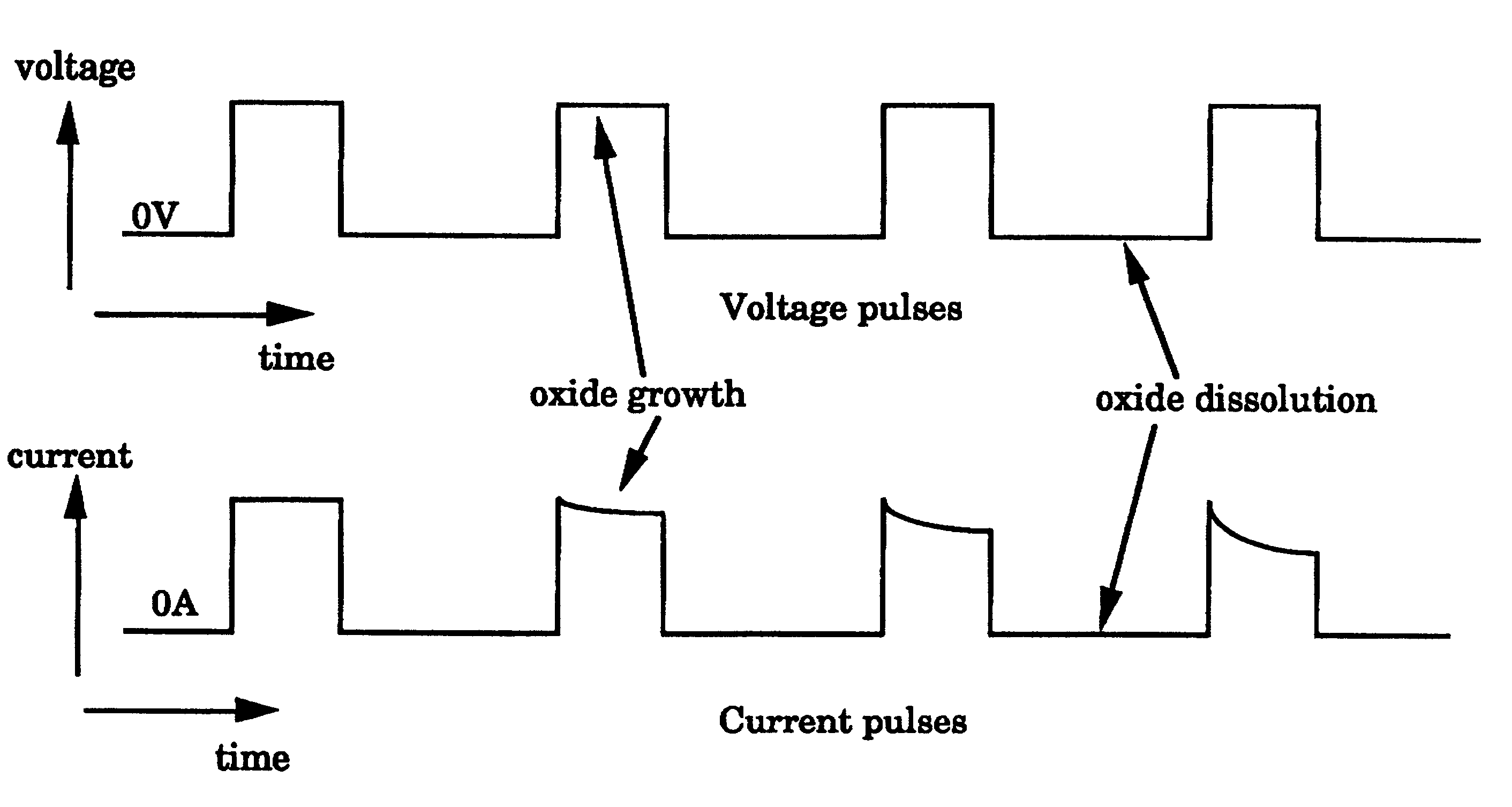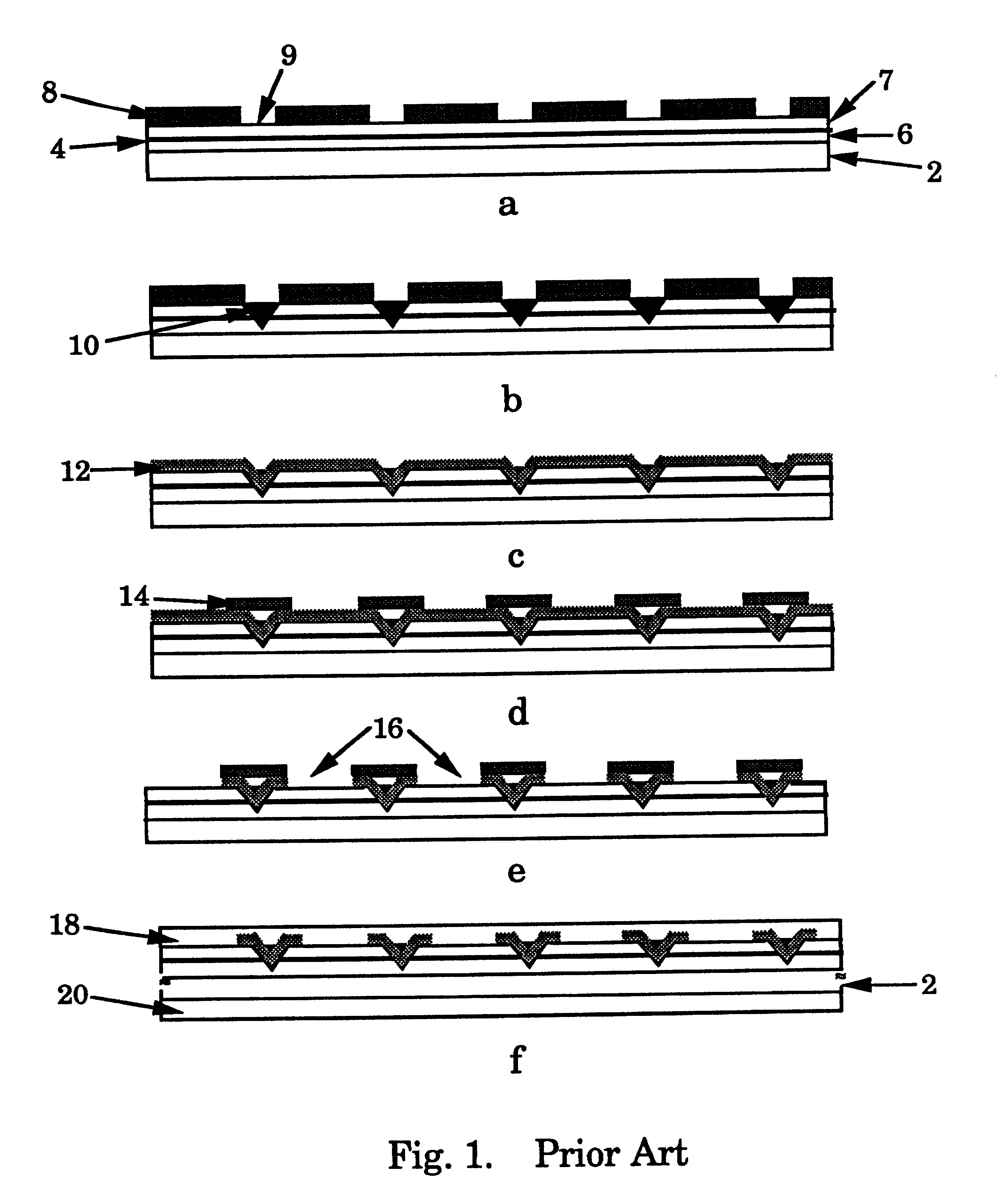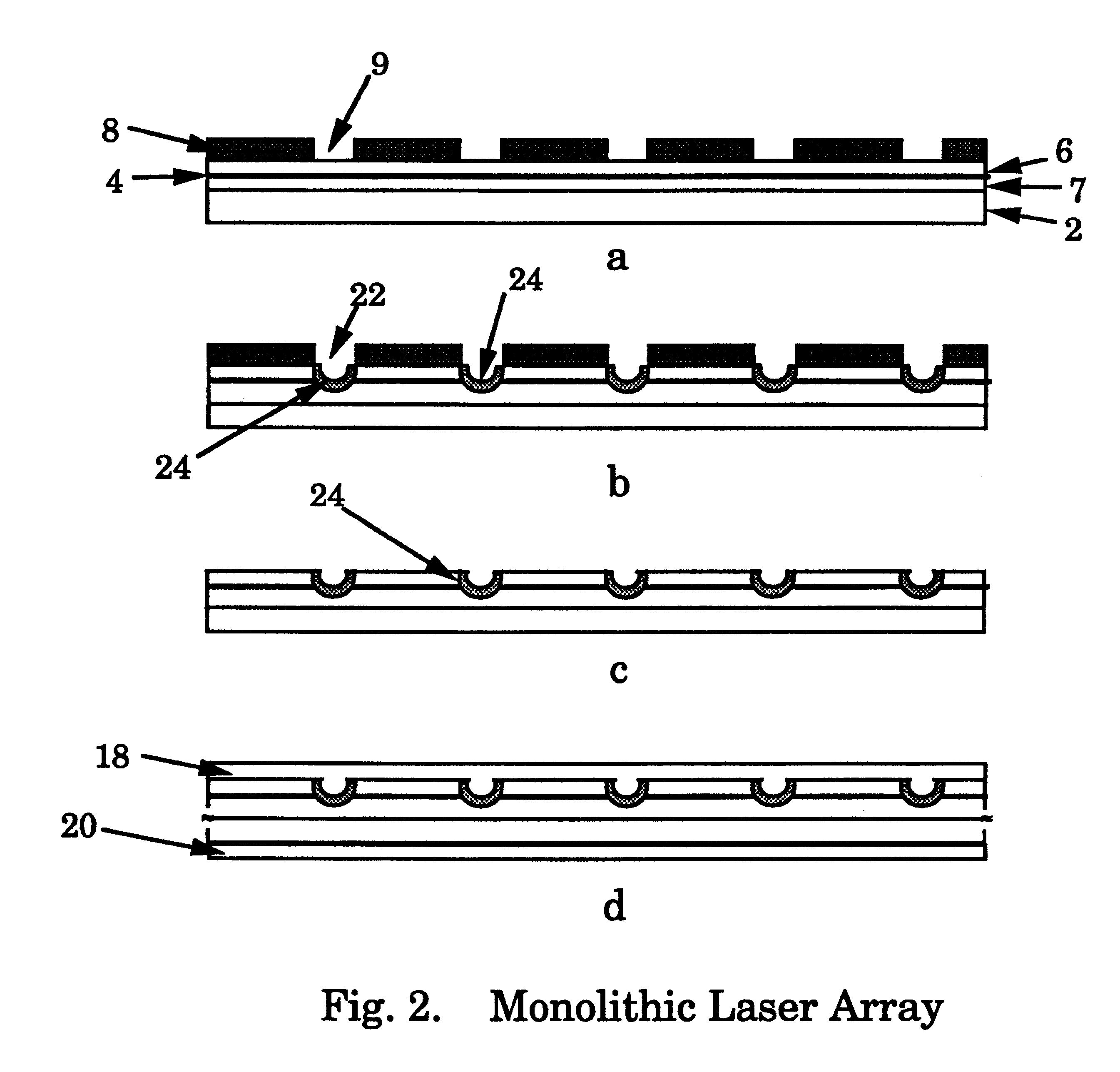Method for etching multilayer compound semiconductor material
a semiconductor material and compound technology, applied in the direction of individual semiconductor device testing, semiconductor/solid-state device testing/measurement, instruments, etc., can solve the problem of increasing the generation of defects
- Summary
- Abstract
- Description
- Claims
- Application Information
AI Technical Summary
Benefits of technology
Problems solved by technology
Method used
Image
Examples
example 2
AlGaInAs Laser Diode Laser Bars
A laser wafer with a AlGaInAs quantum well, denoted L362, which is sketched in FIG. 10, was divided in two. One half the wafer was processed into gain guided laser diode bars by the method of the present invention as shown in FIGS. 6a-c, the other half was processed into bars of 100 micron wide by 500 micron long lasers by a prior art process of depositing SiO.sub.2, opening 100 micron wide slots in the SiO.sub.2, and metalization. Ridge heights of 200 nm and oxide thicknesses of 100 nm were used. The threshold currents I.sub.th and differential quantum efficiencies (DQE) are given in Table 3.
example 3
AlGInAs Laser Diodes
A laser wafer with a AlGaInAs quantum well, denoted E1795, which is sketched in FIG. 11, was divided in two. One half the wafer was processed into gain guided laser diode bars by the method of the present invention as shown in FIGS. 6a-c, the other half was processed into bars of 100 micron wide by 500 micron long lasers by a prior art process of depositing SiO.sub.2, opening
100 micron wide slots in the SiO.sub.2, and metalization. Ridge heights of 200 nm and oxide thicknesses of 100 nm were used. The threshold currents I.sub.th and differential quantum efficiencies (DQE) are given in Table 4.
example 4
(AlGa).sub.0.5 In,.sub.0.5 P Visible Lasers
A laser wafer sketched in FIG. 12 was processed by the method of this invention to form a 120 nm thick oxide layer with a resultant ridge height of 86 mm. The oxide was found to be unstable when exposed to ambient air for several hours. There was no "travelling oxide" because the GWA solution did not etch the oxide when the pulse was off. We discovered that we could make a stable oxide, however, by reversing the polarity of the pulses. In the reversed current mode, the oxide etched and we could make a ridge 200 nm high, with a 120 nm thick oxide layer terminating in the AlInP cladding layer using a cycle of three polarity flips. In a production mode, the positive voltage pulse could be followed by a negative pulse to both grow and dissolve the oxide at a constant rate. In fact, a thin oxide could be used at the beginning of the process which would grow the oxide faster, and the etching of the oxide could be controlled by the reversed curren...
PUM
| Property | Measurement | Unit |
|---|---|---|
| current density | aaaaa | aaaaa |
| current density | aaaaa | aaaaa |
| etch rate | aaaaa | aaaaa |
Abstract
Description
Claims
Application Information
 Login to View More
Login to View More - R&D
- Intellectual Property
- Life Sciences
- Materials
- Tech Scout
- Unparalleled Data Quality
- Higher Quality Content
- 60% Fewer Hallucinations
Browse by: Latest US Patents, China's latest patents, Technical Efficacy Thesaurus, Application Domain, Technology Topic, Popular Technical Reports.
© 2025 PatSnap. All rights reserved.Legal|Privacy policy|Modern Slavery Act Transparency Statement|Sitemap|About US| Contact US: help@patsnap.com



